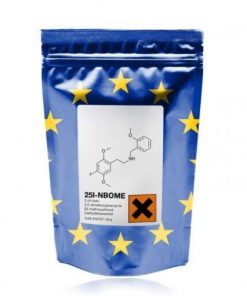PGE1 (Prostaglandin E1)
$70.00 – $120.00
(MOQ): 5 Grams
Delivery Time: USA and Canada: 24 to 48 hours
International Delivery: 3 to 5 Business Days
100% Discreet, Secure, & Guarantee Delivery

Prostaglandin E1 (PGE1) research chemicals for sale is a major prostaglandin found in human semen that acts as a vasodilator, a fibrinolytic agent, and an inhibitor of platelet aggregation. Additionally, PGE1 has been shown to affect protein kinase C (PKC), calcium movement, and adenylate cyclase yielding a multitude of physiological effects. PGE1 is the cyclooxygenase metabolite of dihomo-y-linolenic acid, but it is undetectable in the plasma of animals.
Prostaglandin E1 was isolated in 1957 and approved for medical use in the United States in 1981. It is on the World Health Organization’s List of Essential Medicines, the safest and most effective medicines needed in a health system.[5] In the United Kingdom, a dose costs the NHS about 75 pounds.[6] In the United States, it costs $100–200 per dose.In babies, however, prostaglandin E2 works as well as prostaglandin E1 and is much less expensive.
Common side effects when given to babies include decreased breathing, fever, and low blood pressure. When used for erectile dysfunction side effects may include penile pain, bleeding at the site of injection, and prolonged erection (priapism). Prostaglandin E1 is in the vasodilator family of medications. It works by opening blood vessels by relaxing smooth muscle.
Editor’s Note: You can buy “PGE-1 2MG (Prostaglandin E1)” from our top recommended source.
HOW do Prostaglandin E1 (PGE1) research chemicals work?
Alprostadil is a prostaglandin, specifically prostaglandin E 1, that is produced endogenously to relax vascular smooth muscle and cause vasodilation. The total prostaglandin concentration occurring naturally in human seminal fluid is 100 to 200 mg per mL and includes prostaglandins E 1 and E 2.
Impotence therapy agent—When administered by intracavernosal injection or as an intraurethral suppository, alprostadil acts locally to relax the trabecular smooth muscle of the corpora cavernosa and the cavernosal arteries. Swelling, elongation, and rigidity of the penis result when arterial blood rapidly flows into the corpus cavernosum to expand the lacunar spaces. The entrapped blood reduces the venous blood outflow as sinusoids compress against the tunica albuginea.
Adding papaverine and phentolamine to the alprostadil regimen synergistically increases arterial blood flow via separate mechanisms. Papaverine relaxes the sinusoid and the smooth muscle of the helicine arteries, while phentolamine relaxes arterial smooth muscle and blocks the alpha-adrenergic receptors that inhibit an erection.
Buy today from the best research chemicals online shop.
SIDE EFFECTS
Signs of potential side effects, especially hypotension; prolonged erection; priapism; testicular pain or oedema; fibrosis of penis (injection only)
Signs and symptoms of systemic absorption, usually resulting from excessive doses, including dizziness, faintness, reflexive hypertension, prostatic disorders, rapid pulse, or respiratory infection
Alprostadil is also used in maintaining a patent ductus arteriosus in newborns. This is primarily useful when the threat of premature closure of the ductus arteriosus exists in an infant with ductal-dependent congenital heart disease, including cyanotic lesions (e.g., hypoplastic left heart syndrome, pulmonary atresia/stenosis, tricuspid atresia/stenosis, transposition of the great arteries) and cyanotic lesions (e.g., coarctation of the aorta, critical aortic stenosis, and interrupted aortic arch).
DOSAGES of PGE1
Impotence therapy agent
Initial: Intraurethral, 125 or 250 mcg a day, followed by dose adjustments in stepwise fashion on separate occasions as instructed by a physician.
Maintenance: Intraurethral, an individual dose established by a physician is inserted by the patient between ten and thirty minutes before intercourse. Dosage adjustments require physician consultation. No more than two suppositories should be used within twenty-four hours.
CONCLUSION
Results from the pilot-study suggest that intravenous PGE(1) may be used efficaciously and safely to prevent RCM-induced renal dysfunction in patients with pre-existing impaired renal function.
Technical Information
Formal Name: 11α,15S-dihydroxy-9-oxo-prost-13E-en-1-oic acid
CAS Number: 745-65-3
Synonyms: Alprostadil, NSC 165559, PGE1
Molecular Formula: C20H34O5
Formula Weight: 354.5
Purity: ≥98%
Formulation(Request formulation change): A crystalline solid
Solubility(Learn about Variance in Solubility)
DMF: 100 mg/ml
DMSO: 50 mg/ml
Ethanol: 50 mg/ml
PBS (pH 7.2): 0.5 mg/ml
SMILES: O=C1[C@H](CCCCCCC(O)=O)[C@@H](/C=C/[C@@H](O)CCCCC)[C@H](O)C1
InChi Code: InChI=1S/C20H34O5/c1-2-3-6-9-15(21)12-13-17-16(18(22)14-19(17)23)10-7-4-5-8-11-20(24)25/h12-13,15-17,19,21,23H,2-11,14H2,1H3,(H,24,25)/b13-12+/t15-,16+,17+,19+/m0/s1
InChi Key: GMVPRGQOIOIIMI-DWKJAMRDSA-N
Shipping & Storage Information
Storage: -20°C
Shipping: Room Temperature in continental US; may vary elsewhere
Stability: ≥ 4 years
| Quantity | 5 mg, 10 mg |
|---|
You must be logged in to post a review.
Related products
Research Chemicals
Research Chemicals
Research Chemicals
Research Chemicals







Reviews
There are no reviews yet.